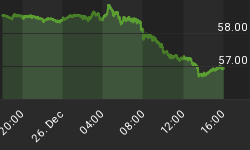Through the SEC, the Fed controls margin requirements and a recent announcement was described by the deputy director of the SEC as "a very significant change". Remember that this is essentially the same Fed and SEC that argued that no increases were needed during the late 1990s' tech mania.
Now they are talking about lowering margin requirements for institutions on stocks, options, and futures. Now ranging from 25% to 50%, the proposal is to drop them to 15%.
Of course, prevailing margin requirements were imposed by panicked policymakers in the 1930s' contraction in order to prevent another 1929 blowout. This was understandable as, at the time, most knew that the bust was caused by the preceding boom. Propaganda since by a few generations of interventionist economists insist that the depression was "caused" by the hike in administered rates from 5% to 6% in August, 1929. This conclusion, of course, was contrived to retrospectively protect the infallibility of the Fed as an institution by shifting the blame to the functionary that hiked the discount rate - a classic example of the left's chronic resort to ad homenum argument.
As with a senior central bank in any great financial mania, it followed the course of short-dated market rates of interest - typically by a few months. Recent examples blew out in 2000, 1929, and 1873.
Traditionally, the Fed raised margin requirements as a stock boom matured and then lowered them near the end of the inevitable contraction. Despite the remarkable intensity of the 2000 mania, margin requirements were not increased. Perhaps the Fed rationalized this non-action as not wanting to be seen doing anything that could be construed as breaking the mania - a curious abandonment of touted contra-cyclical genius.
Why then the "significant change" in margin requirements now?
An answer could be found in reviewing the last time a senior central bank lowered margin requirements close to the peak of a boom, and that was in early 1990.
At the peak of the Tokyo mania, the Japan Times headline "Economists Believe The coming Decade Will Be A Golden Era" (December 26, 1989). Our May 1, 1990 edition reviewed the initial decline as follows.
"The main problem is that everyone has always expected the Japanese government to support the stock market. With the first break in Tokyo, the authorities lowered margin requirements and margin accounts bought. So far as we can tell, most sharp breaks at the end of a Bull market are caused by the liquidation of speculative positions.
Usually with this, there is a reduction in margin debt. In Tokyo's case, the market sold off 20% with a substantial rise in margin debt. This is a very vulnerable stock market."
That edition pointed out that after such a mania the index could decline to about 18% of the high. The low in 2003 was 19.5% of the high.
Obviously, on the initial break, pain to big players was sufficient to prompt concerned policymakers to lower margin requirements. As noted at the time, this was a grave error and yet another example of naïve policymakers exacerbating natural market forces.
In looking at the senior indexes and credit spreads, the conviction is that nothing can go wrong. Essentially, this is based upon the short-lived folly that the last rate hike is a good thing.
Beneath the ebullient veneer is a serious problem in the housing market which, with a huge 50% of their assets committed to mortgages, will feed into commercial banks. The other problem is the threat of more blowups in hedge-fund-land.
Possibly these two threatening conditions have prompted the discussion about reducing margin requirements, which would likely be as impractical as the one at the end of the Tokyo bubble.
















